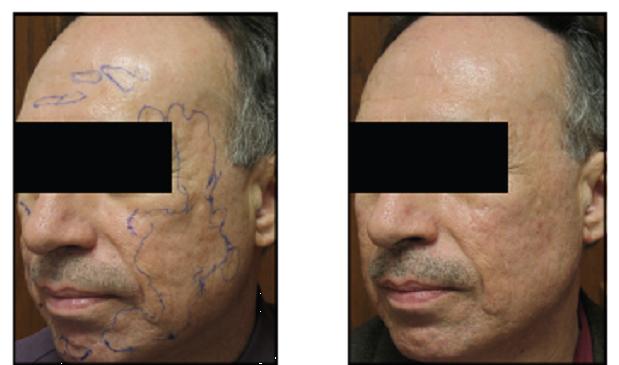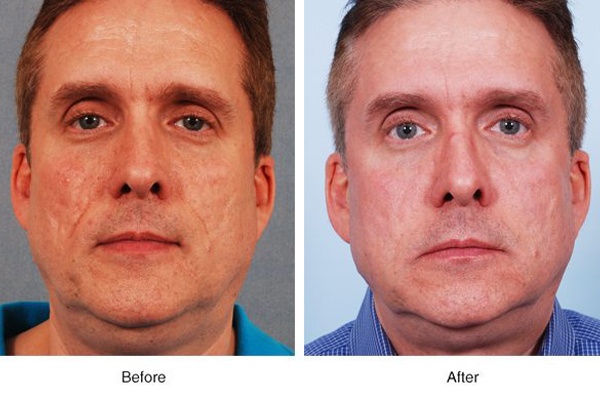Targeted Acne Scars Treatment: Accomplish Smooth, Also Complexion
Targeted Acne Scars Treatment: Accomplish Smooth, Also Complexion
Blog Article
Exploring Skin Problems: Determining and Treating Acne Scars for Healthier Skin
Acne scars represent a significant problem for individuals looking for to preserve healthy skin, as they can affect both appearance and self-confidence. Recognizing the different kinds of marks, from atrophic to hypertrophic, is crucial for establishing suitable therapy options.
Comprehending Acne Marks

The body's all-natural recovery procedure can result in either atrophic marks, which look like anxieties in the skin, or hypertrophic scars, which are increased and result from overproduction of collagen. Additionally, the emotional toll of acne marks must not be ignored; many people report feelings of humiliation, anxiety, and lowered self-esteem. This psychological burden can affect social communications and general lifestyle.
Resolving acne marks calls for an extensive understanding of their development and influence. Awareness of the capacity for lasting repercussions related to untreated marks can inspire individuals to seek proper therapies. Early treatment and effective administration strategies can considerably enhance skin look and improve mental durability, emphasizing the value of recognizing the intricacies surrounding acne scars.
Kinds Of Acne Marks
Acne marks can be categorized into distinctive kinds, each showing unique attributes and requiring details treatment techniques. acne scars. The primary kinds of acne scars consist of atrophic, hypertrophic, and keloid marks

Hypertrophic scars, on the other hand, are elevated above the skin degree and are the outcome of too much collagen production during the recovery procedure. They usually continue to be within the boundaries of the initial acne sore. Keloid marks are similar however prolong beyond the initial injury website, developing bigger, elevated areas that can be uncomfortable or itchy.
Understanding these sorts of marks is crucial for picking ideal therapy choices. Different scars might respond far better to certain therapies, such as laser treatments, fillers, or medical interventions, emphasizing the significance of a tailored approach to acne scar management.
Determining Your Marks
When examining the appearance of your skin, it is vital to accurately recognize the kind of marks existing, as this will certainly inform one of the most effective therapy method. Acne marks normally fall right into 2 groups: hypertrophic and atrophic marks. Atrophic marks, which are one of the most typical, show up as depressions or impressions on the skin. These can better be classified into ice-pick marks, boxcar scars, and rolling marks, each displaying distinct characteristics and calling for different approaches for analysis.
Hypertrophic marks, on the other hand, are elevated and occur due to excessive collagen production during the recovery process. Recognizing the particular functions of your marks-- such as width, depth, why not check here and appearance-- is important for correct identification (acne and acne scars treatment). In addition, take into consideration the distribution of scars throughout your skin, as this can suggest the intensity and period of the acne problem
Engaging with a skin doctor can offer valuable understandings into the nature of your marks, assisting in the distinction between numerous types. anchor A detailed understanding of your scars will eventually bring about a more tailored and efficient therapy strategy, making sure a more clear and much healthier skin tone.
Treatment Options Offered
Identifying the specific kind of acne scars present on your skin prepares for exploring effective treatment alternatives. Usual kinds of acne scars include atrophic (clinically depressed), hypertrophic (raised), and post-inflammatory erythema.
For atrophic marks, alternatives such as chemical peels, microneedling, and laser resurfacing are widely utilized. Chemical peels off make use of acids to remove the outer layer of skin, advertising new cell growth.
Hypertrophic scars can be treated with corticosteroid shots to flatten the scar or laser therapy to minimize redness and boost appearance. Silicone gel sheets and pressure dressings might likewise assist in managing increased scars.
In enhancement, dermal fillers can briefly fill up in depressions from atrophic marks, while surgical excision may be appropriate for extreme situations. Each treatment alternative has its factors to consider and benefits, making it vital to speak with a skin doctor. They can give customized referrals based on the type and severity of your marks, in addition to your skin kind and overall health and wellness.
Tips for Avoidance
Reliable prevention methods important site can considerably minimize the likelihood of creating acne scars. Using non-comedogenic items assists protect against clogged up pores, which can intensify acne.
Staying clear of the impulse to pop or pick acne lesions is important, as this can bring about deeper skin damages and boost the risk of scarring. Instead, consider making use of a cold compress or non-prescription treatments to reduce swelling and inflammation.
Sunlight protection is an additional important facet of prevention; ultraviolet (UV) rays can darken marks and prevent the healing procedure. Using a broad-spectrum sun block with at the very least SPF 30 daily can secure the skin and promote even healing.
Lastly, preserving a balanced diet regimen rich in antioxidants, minerals, and vitamins sustains skin health and wellness and recovery. Remaining moisturized and taking care of stress and anxiety levels can also play a significant role in decreasing acne flare-ups. By carrying out these methods, individuals can dramatically decrease their opportunities of creating acne scars.
Conclusion
To conclude, understanding and recognizing acne scars is essential for efficient treatment and accomplishing healthier skin. Numerous types of acne marks, consisting of atrophic and hypertrophic marks, require particular treatments tailored to private needs. Therapy choices range from chemical peels and microneedling to corticosteroid shots, emphasizing the importance of seeking advice from a dermatologist. Furthermore, adopting a mild skincare routine and protecting the skin from UV exposure can substantially add to the prevention of more scarring and general skin wellness.
The body's natural healing process can result in either atrophic scars, which show up as anxieties in the skin, or hypertrophic marks, which are increased and result from overproduction of collagen. They are further split into 3 subtypes: ice choice scars, boxcar scars, and rolling marks. Acne marks usually fall right into 2 classifications: hypertrophic and atrophic marks. These can further be classified into ice-pick marks, boxcar marks, and rolling marks, each displaying distinct attributes and calling for different techniques for assessment.
Different types of acne scars, consisting of atrophic and hypertrophic scars, require particular interventions tailored to individual needs.
Report this page